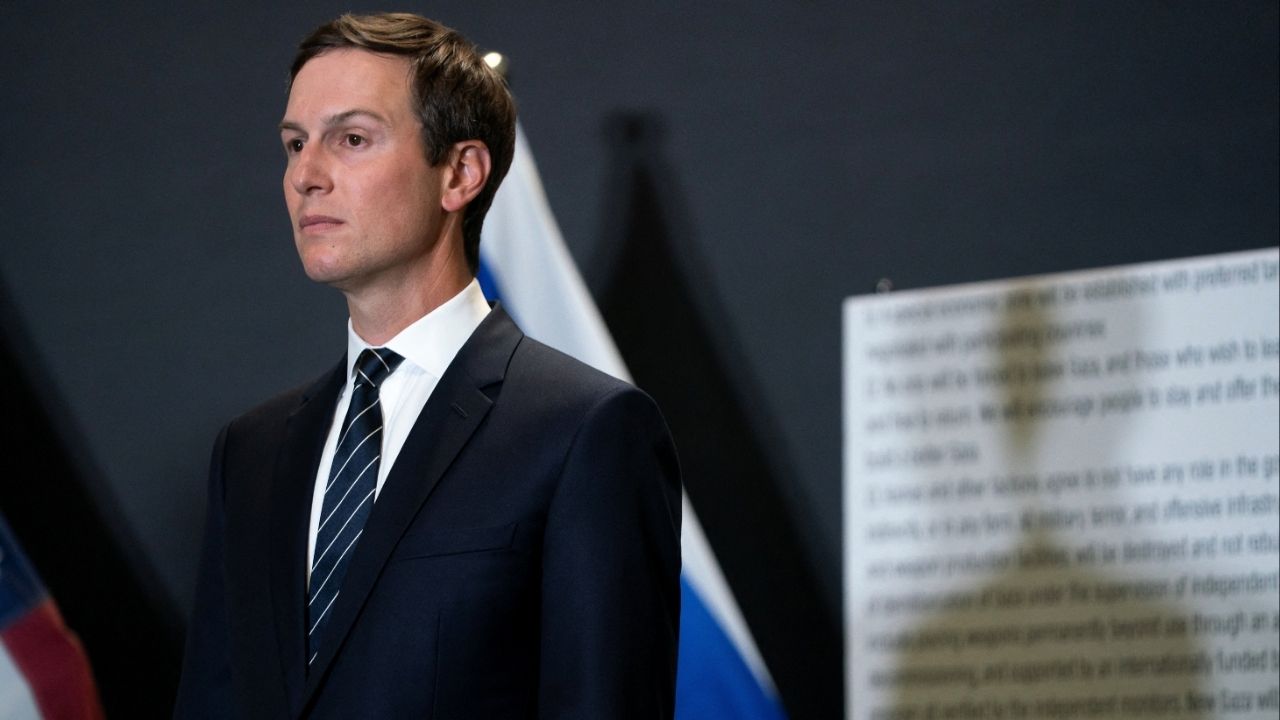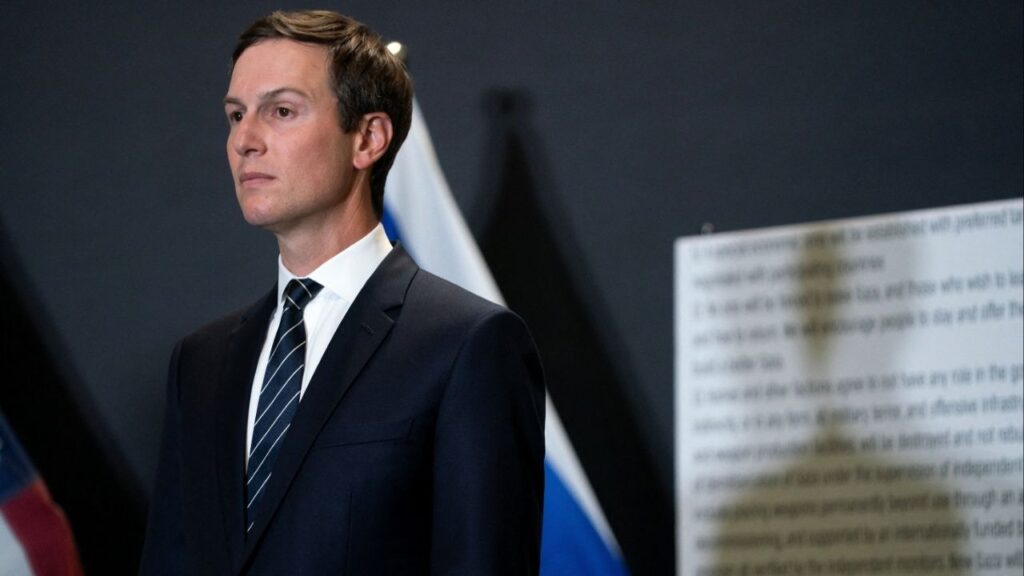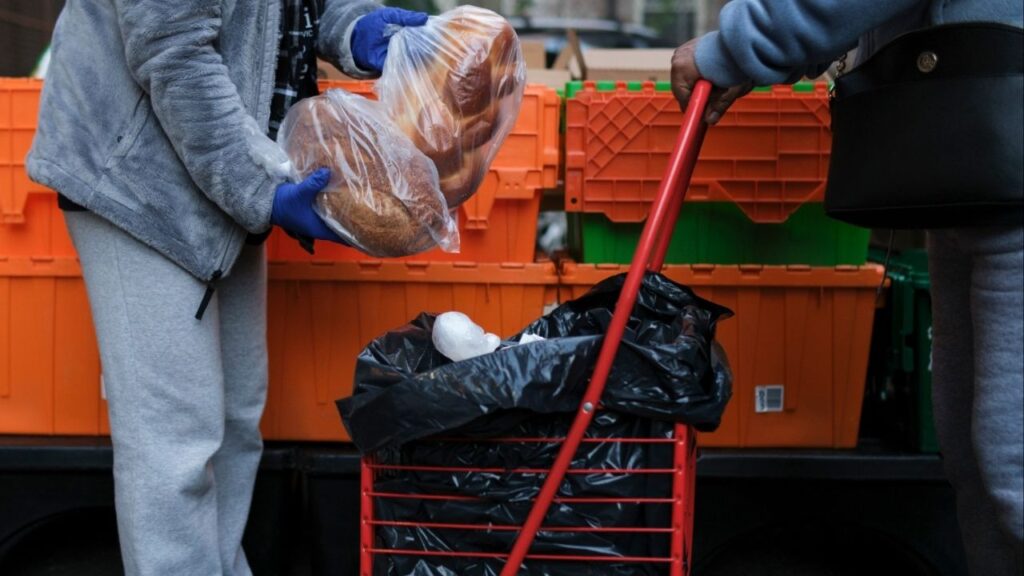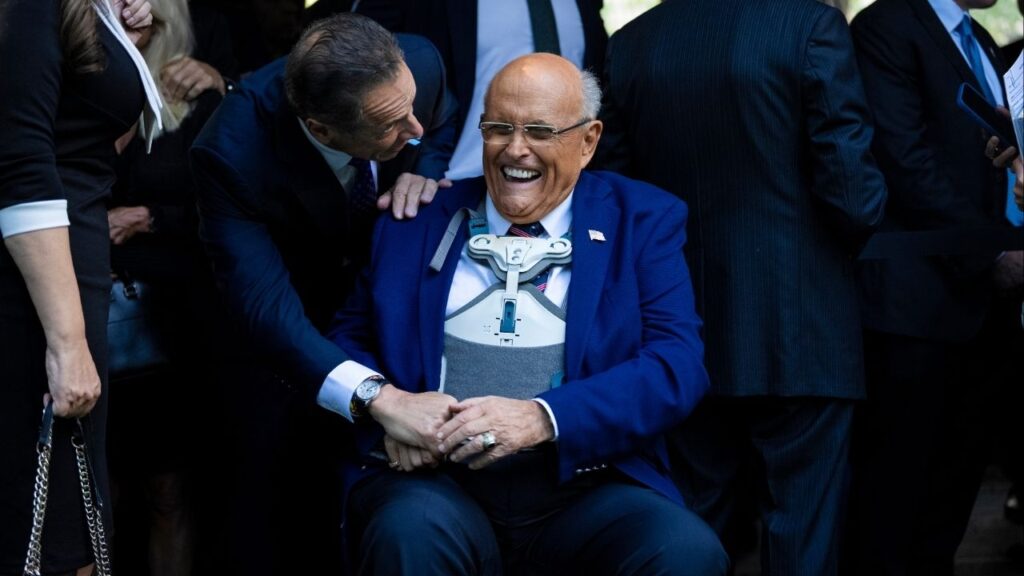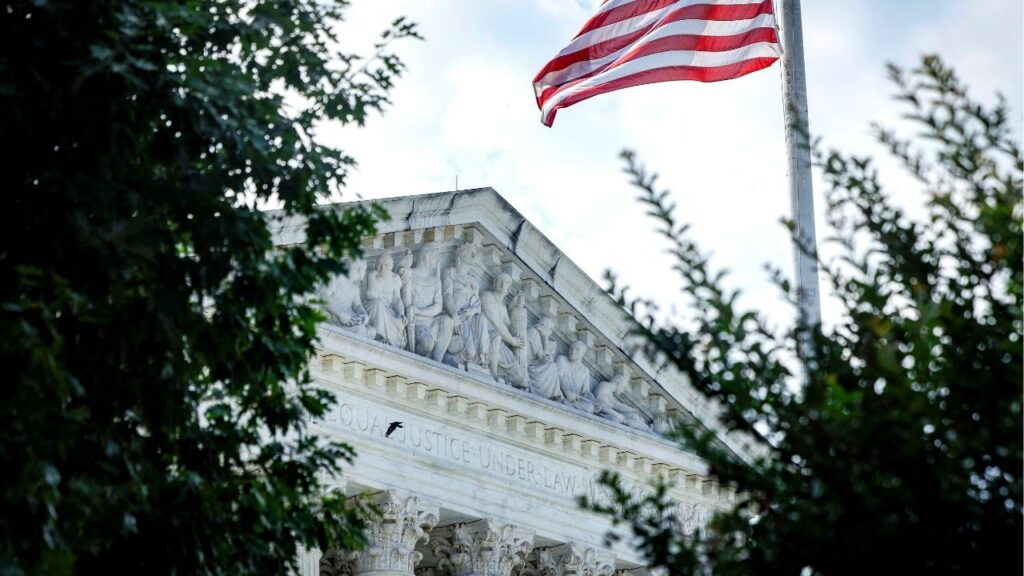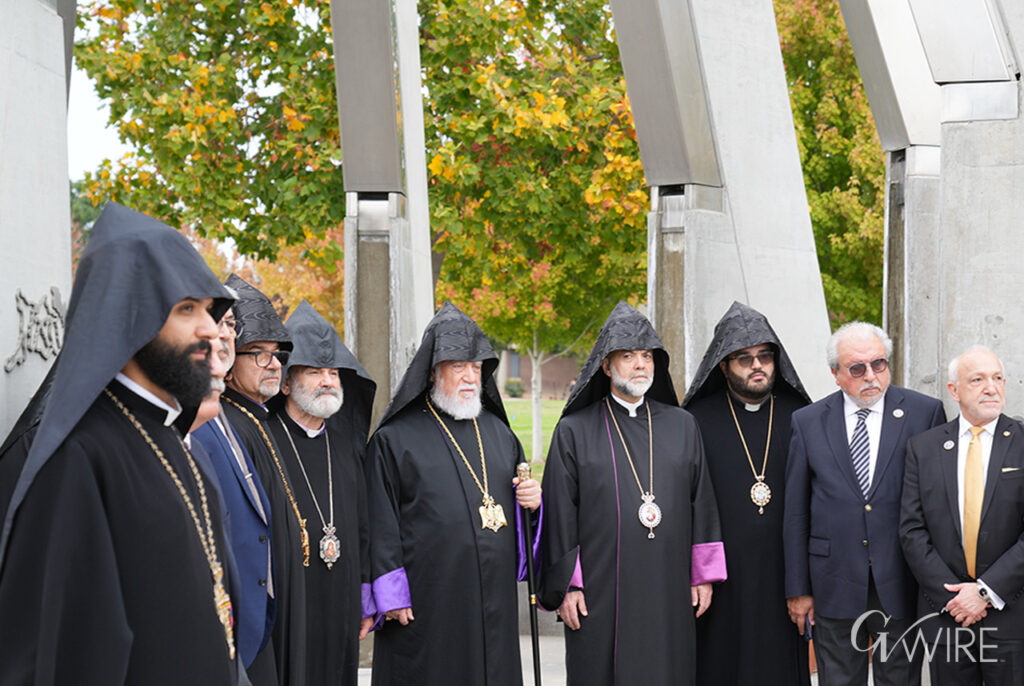Jared Kushner listens as U.S. Vice President JD Vance speaks during a press conference following a military briefing at the Civilian Military Coordination Center in southern Israel on Tuesday, Oct. 21, 2025. (Nathan Howard/Pool via Reuters)
Share
|
Getting your Trinity Audio player ready...
|
JERUSALEM/CAIRO — U.S. mediators met Israel’s prime minister on Monday with attention turning to the second, far more complex, phase of the Gaza ceasefire deal and the immediate problem of a standoff over a group of Hamas fighters still holed up in tunnels.
The meeting between U.S. President Donald Trump’s son-in-law Jared Kushner and Israeli Prime Minister Benjamin Netanyahu comes a month after Washington and regional states pressed Israel and Hamas to a truce after two years of devastating war.
However, any progress in Trump’s ceasefire plan will not only require both sides to agree on issues that have foiled previous peacemaking efforts, but also to resolve the immediate stalemate over the trapped Hamas fighters.
Trapped Fighters as Test Case
Israel’s government spokesperson said Netanyahu and Kushner had discussed disarming Hamas, demilitarizing Gaza and ensuring the group would never again have a governing role in the enclave – all issues to be resolved in the next phase of truce talks.
An official briefed on the details of Monday’s meeting said it had focused on both the issue of the trapped fighters and an international stabilization force envisaged for Gaza under Trump’s plan.
There are around 200 fighters in the tunnels under Rafah in the Gaza zone still controlled by Israel’s military, with Hamas demanding they be allowed to depart – something Israel has so far resisted.
Any decisions on Israel’s policies on Gaza are being made in collaboration with the Trump administration, the Israeli government spokesperson said on Monday.
U.S. envoy Steve Witkoff last week described efforts to resolve the standoff by giving the fighters safe passage back into Hamas-controlled Gaza areas in return for disarming as a test case for future steps in the wider ceasefire plan.
Two Western diplomats said Israel was reluctant to allow any safe passage either to elsewhere in Gaza or to Egypt.
A Hamas official said talks on the issue were continuing. Hamas was keen to resolve the dispute and “remove any pretext Israel could use to undermine the ceasefire agreement”, he said, but added that Hamas rejected the fighters surrendering.
Another Palestinian source said mediators had stepped up their efforts to resolve the dispute, believing any armed attempt to force their surrender could risk the entire ceasefire.
Making longer-term progress on the ceasefire plan will require agreement on a transitional governing body for Gaza without Hamas involvement, the formation of the stabilization force and the setting of the terms of its involvement, Hamas disarmament and reconstruction.
Each of those elements would likely involve significant pushback from either Hamas or Israel or both. The international force might require a United Nations mandate for countries to risk putting any forces on the ground.
The United Arab Emirates does not yet see a clear framework for the force and under current circumstances would not take part, a senior Emirati official said on Monday.
Both Sides Accuse Each Other of Breaching Truce Deal
On Sunday, Hamas returned the body of an Israeli soldier killed in Gaza more than a decade ago. That leaves the bodies of four hostages taken at the outbreak of the most recent war still in the Palestinian territory, although it is unclear whether they can be retrieved.
Hamas was supposed to hand over all 28 bodies of hostages remaining in Gaza but Israeli officials have acknowledged that it will be a challenge for the group to access around three of them. An international taskforce will help, according to the truce plan.
Israel and Hamas have repeatedly accused each other of breaching the October truce deal, with Israel saying Hamas was stalling over returning hostage remains and Hamas saying Israel continued to obstruct aid deliveries.
There have been at least two deadly attacks by Palestinian militants on Israeli forces in Rafah, as well as repeated Israeli airstrikes that have killed 244 Palestinians since the truce agreement, according to local health authorities.
Two Palestinians, including a child, were killed in an Israeli airstrike in the southern Gaza Strip on Monday after another man was killed by Israeli fire on Sunday, the local health authorities said. Israel’s military did not immediately respond to a Reuters request for comment on the strikes.
—
(Reporting by Steven Scheer and Maayan Lubell in Jerusalem and Nidal al-Mughrabi in Cairo; Writing by Angus McDowall; Editing by Aidan Lewis)
RELATED TOPICS:
Categories

Kenya Says Vice President Vance Has Cancelled Planned Visit



